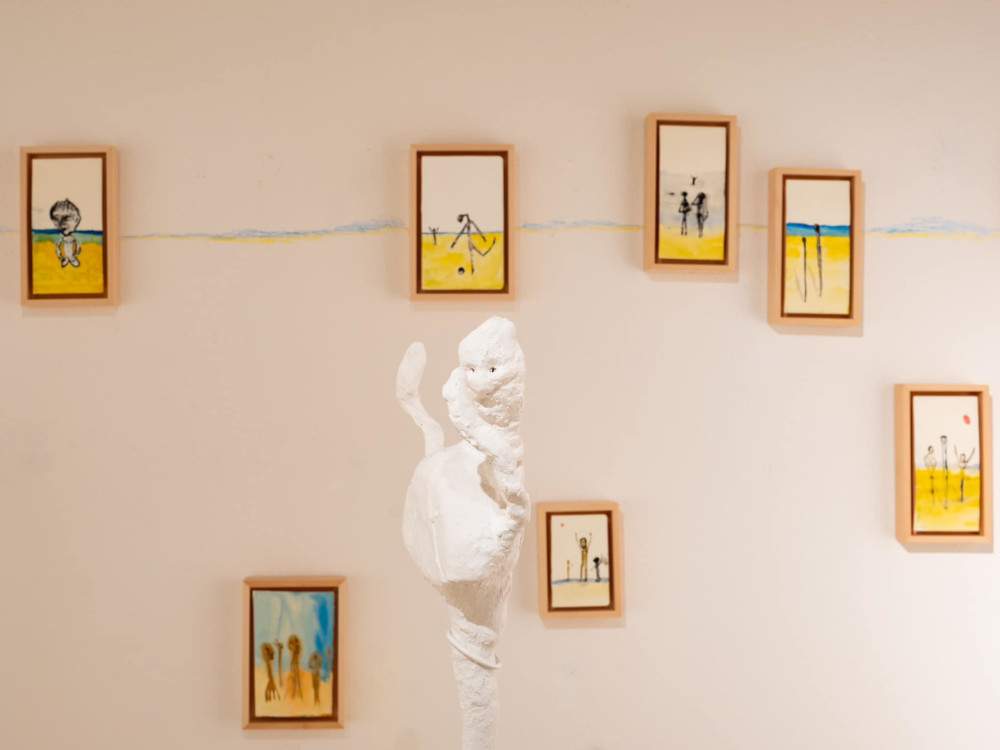Yuval Avital’s exhibition Lucus, curated by Massimo Guastella, opened at the Biscozzi | Rimbaud Foundation in Lecce. For the Foundation, the artist conceived and realized a site-specific project inspired by the sacred forest, the lucus, dear to the ancient Romans but equally considered by the arts. Constantly searching for human traces and ritual recoveries, fascinated by the different identities of places, Avital conceived an exhibition itinerary that intends to create interrelationships with the community and its cultural and natural roots, evoking the remote forested areas covered by the scrub of the Ionian-Salentine peninsula.
Ninety works are on display, some recent and others created for the occasion, all characterized by versatility in the use of languages and means of expression, by the sometimes restless creativity that combines traditional art making with multimedia.
The exhibition itinerary unfolds in four moments: in the first room, on the first floor, accessed through a curtain, five menhirs suggest the sacred place, symbolizing a sylvan landscape where the approximate parallelepipeds rise vertically, like trees. The monolithic monuments are reproduced to scale, in “dialogue” (as the artist calls it) with local papier-mâché artisans. Those vertical structures are accompanied by the pictorial series of Bathers, representations of expressionist implantation within a dreamlike atmosphere. The installation, conceived specifically for the Foundation, allows the public to penetrate into an immersive environment that, as the curator points out, “transforms into a metaphor of the Mediterranean landscape, lost but persistent in memory, in a sort of immersive total room, very close to the total work that is at the same time the artist’s personal signature.”
We continue in the room where twelve sound masks are arranged, with hieratic, irregular and unreal effigies, emitting ineffable, perhaps ancestral sounds. It then continues in the next room with the light box from the 2018 Light Recordings No. 8 Taidung/32 photo series, a night shot experienced directly in a sacred forest among the indigenous traditions of Taiwanese people. The large-scale screen is paired with the “community” of fourteen plaster Bathers, surreal figurines with human bodies interpenetrated by vegetation.
The exhibition concludes in the first-floor rooms, where Avital deploys three Singing Tubes, totemic sound sculptures that reproduce voices, among works from the Foundation’s permanent collection: the tall, breathing giraffe(Singing Tubes No. 2), the flickering blue spider(Singing Tubes No. 3) and the vividly tinged, grave-toned worm(Singing Tubes No. 6).
In the collage of expressive means of art making, Yuval Avital makes seemingly distant elements coexist, summarizing them and closely relating the present with territory, origins and rituals.
A catalog of the exhibition, edited by Massimo Guastella, Dario Cimorelli Editore, is in preparation.
For info: https://www.fondazionebiscozzirimbaud.it/it/
 |
| At the Biscozzi Rimbaud Foundation in Lecce, Yuval Avital's sacred forest |
Warning: the translation into English of the original Italian article was created using automatic tools. We undertake to review all articles, but we do not guarantee the total absence of inaccuracies in the translation due to the program. You can find the original by clicking on the ITA button. If you find any mistake,please contact us.